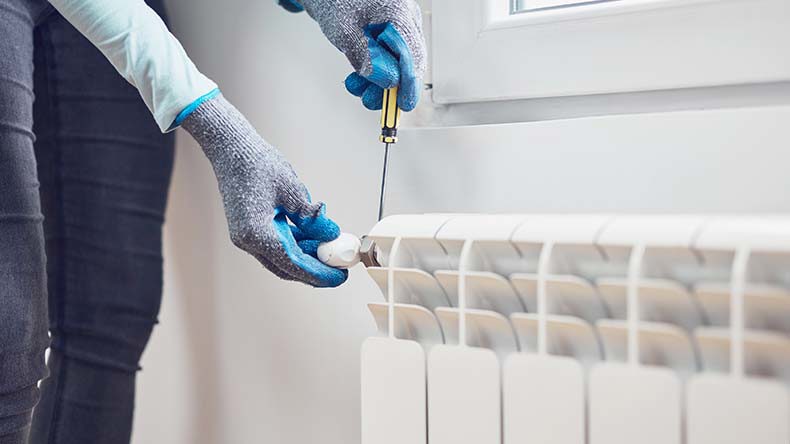There could be a multitude of reasons why your radiator is not heating up. With some simple checks, a radiator can usually be fixed by taking the following steps.
Why Are None of my Radiators Heating Up?
In some cases, all of your radiators may not be heating up at the same time, in which case it’s important to check your boiler is functioning properly.
Check Your Boiler
Cold radiators could be caused by a malfunction in your boiler. If you have an error code or the pilot light isn’t on, try resetting the boiler. You can also check the settings to make sure it isn’t set in ‘summer mode.’
Another thing you can do is check that the pressure isn’t too high or low, which can be easily fixed by taking a look in your boiler manual to sort out the issue.
Check the Heating Settings
You could have the wrong settings which could be causing your radiators to not heat up. Many people have their heating system on a timer, so make sure that it’s set correctly, and that any wireless thermostats or heating controls are communicating with your boiler. You can always increase the temperature setting on the boiler itself to see if this brings more warmth to your heating.

Why is One Radiator not Heating Up?
In some cases, one of your radiators may be heating up at a slower rate to the rest of them, or even not heating up at all. Here is what you should check to get your radiators working as they should.
1. Check the Valves
The problem with cold radiators could lie within valves rather than the radiator itself. Check that your valves aren’t stuck or seized up, as this will prevent water from flowing through. To do this, remove the thermostatic valve head to reveal a raised pin on the valve. If this pin moves up and down once you press it, it’s working as it should. If the pin is stuck, give it a light tap to release it.
2. Balance Your Radiators
You can also try balancing your radiators, which could help to get all your radiators around the home heating up at the same time. We have an in depth guide on how to balance your radiators here.
3. Bleed Your Radiator
If your radiators are cold at the top, it could be time to bleed the system to remove the trapped air. This often causes cold spots where water can’t circulate so it’s crucial to do this every so often.
Take a radiator key and fit it onto the bleed valve of the cold radiator. Turn the key until you hear air being released from the valve. Once you can no longer hear air being released or when water begins to come out, you’ve successfully removed the air and can close the valve. To look at a more detailed guide, check out this article here.
4. Flush the Sludge
An accumulation of dirt and rust could be causing cold spots at the bottom of your radiator. After bleeding your radiators, if you see that the water is brown, it’s time to flush the sludge to get your radiators working efficiently again. Our detailed guide will take you through this process.

Radiators Making Noise
Radiators can sometimes make weird noises, here’s what to do if you’re experiencing strange sounds coming from your heating. Clicking noises coming from your radiator are actually pretty common and are usually caused when the radiator heats up and cools down, so is nothing to worry about.
If you have a banging noise, it could be time to check your boiler as this could be caused by a build up of limescale in the central heating system. Other noises such as gurgling noises can be fixed by bleeding your radiators to remove any air pockets.
Is it Time for a New One?
If you’ve carried out all the steps above and are still having no luck with radiators that don’t warm up, it could be time to invest in a new radiator or valves.. We have a range of radiators, heated towel rails and valves in an array of sizes and finishes, all ready for a new home.
We hope this guide has helped your radiators get back to their cosy and warm selves, but if the problem persists, it’s recommended that you call in a plumber to provide a professional opinion and solution.








